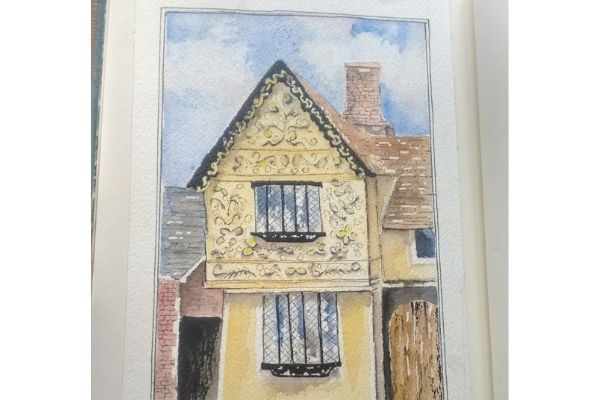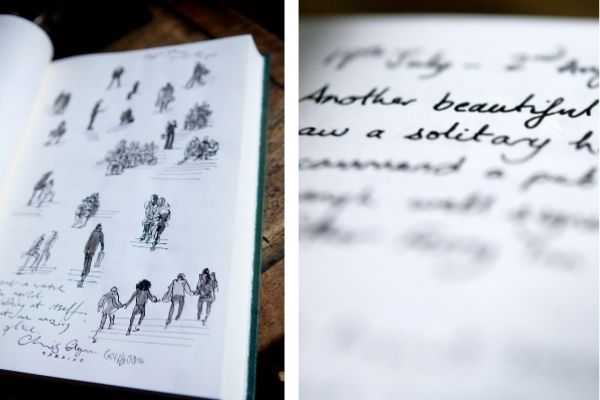Every Landmark contains a green hardbound logbook, and often a back catalogue of previous editions dating back for decades. Logbooks reveal some of the ways people spend their time in the property walking, cooking, playing cards, laying fires, painting, reading, watching the stars, writing, entertaining and simply thinking. Most of all they speak of the special atmosphere of a Landmark Trust building and of the preciousness of the time spent there with friends and family.
'There is a buzz of excitement that lasts 20 minutes or so, when you first enter a Landmark and run from room to room.'

The Ancient House, Suffolk sketched on a logbook page.
‘With each trip I am happier doing less and take even greater pleasure just sitting at the window seat drinking in the view.’
The original logbooks eventually became too small and so Landmark moved onto bigger, green-bound volumes. Each volume contains heavy cartridge watercolour paper, strong enough to write and draw on and to thumb through the many entries. Guests often reach for the logbook first when entering the property, either to read past entries or to look back and find their own from previous stays.
At The Old Parsonage in Iffley, Oxfordshire, the property is onto its seventh Logbook volume. Watch the behind the scenes process here, back when we designed and created brand new bookplates, working with artist, illustrator and printmaker Ed Kluz.

Explore our historic holiday properties